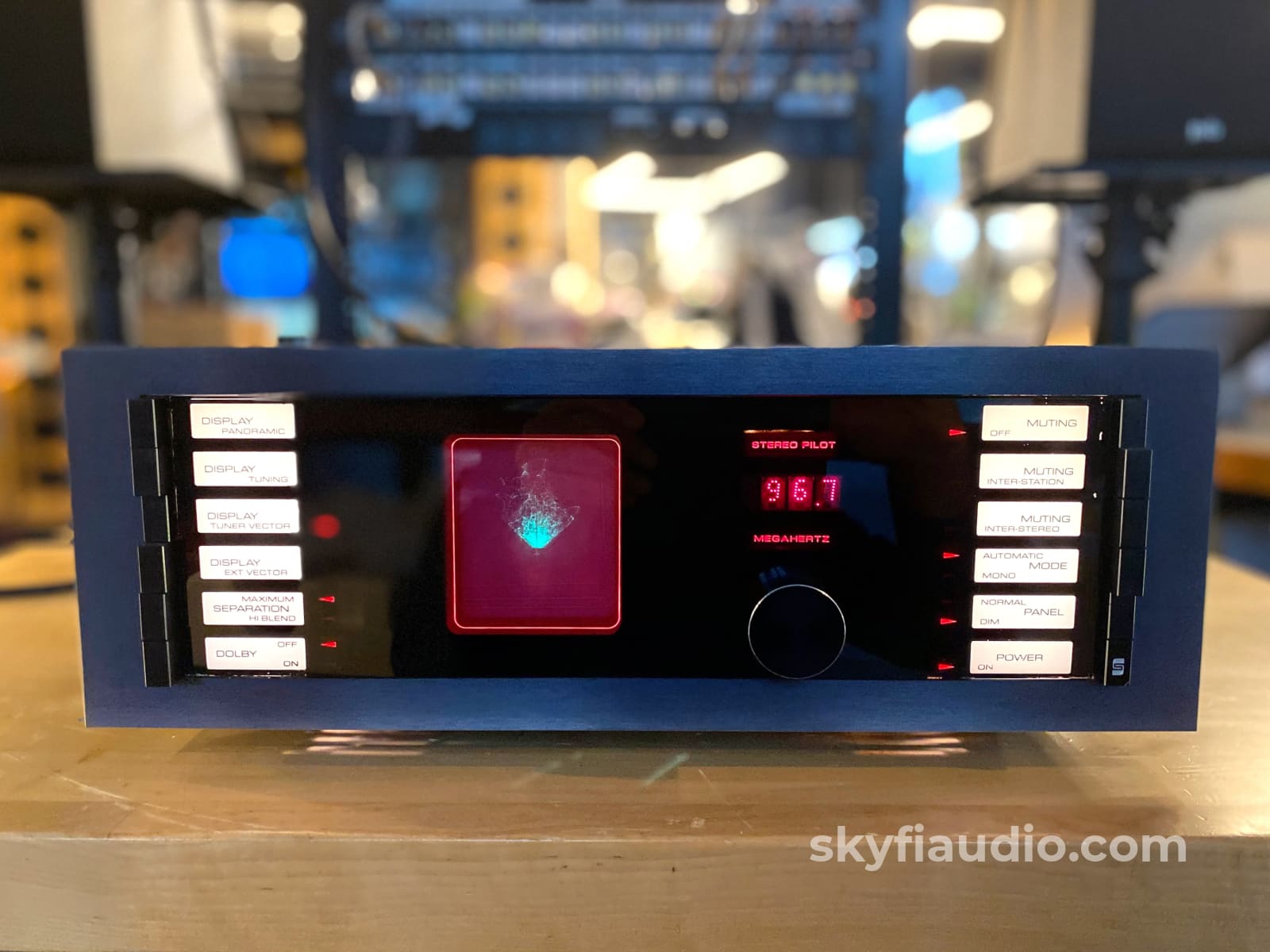
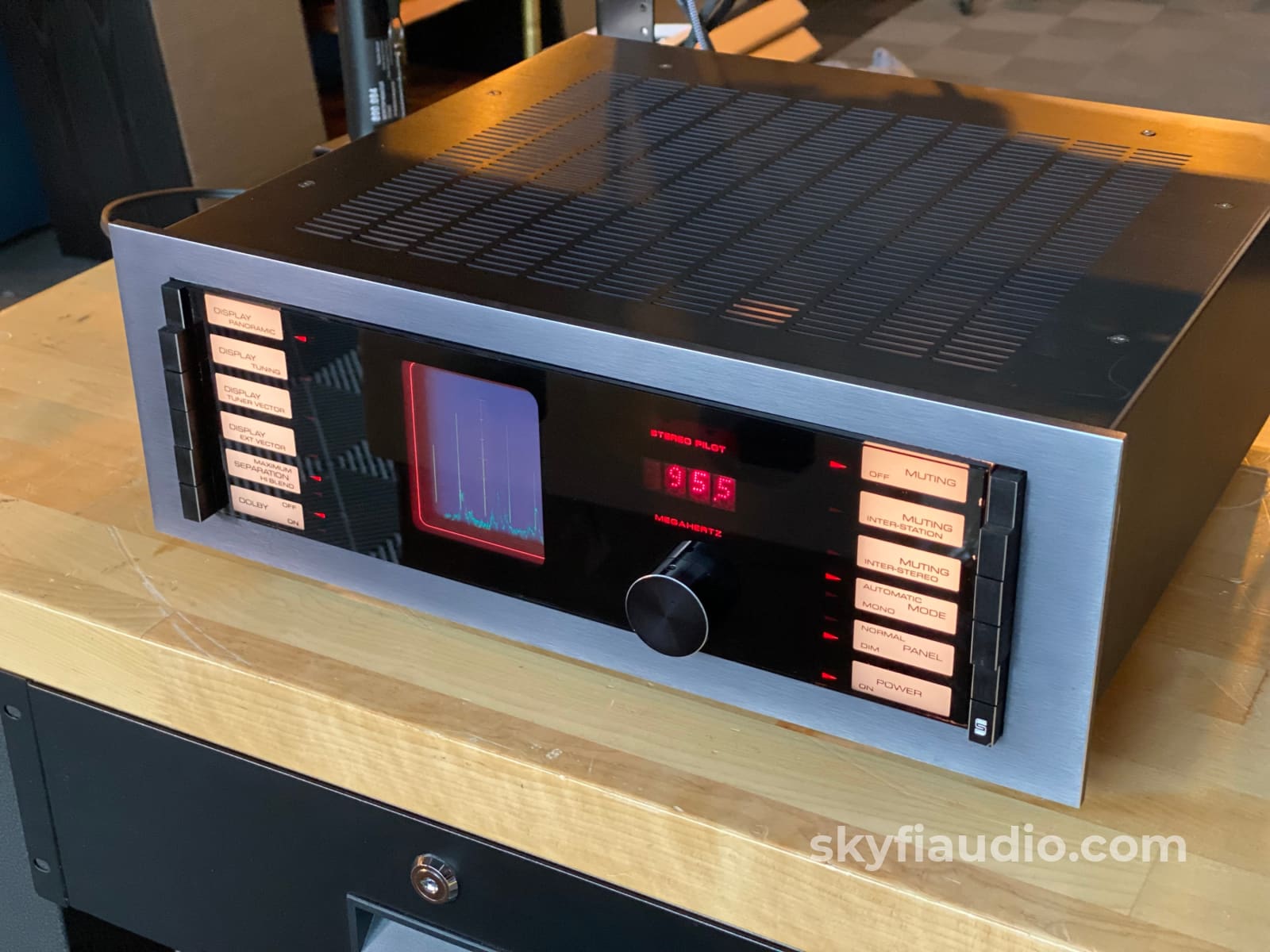
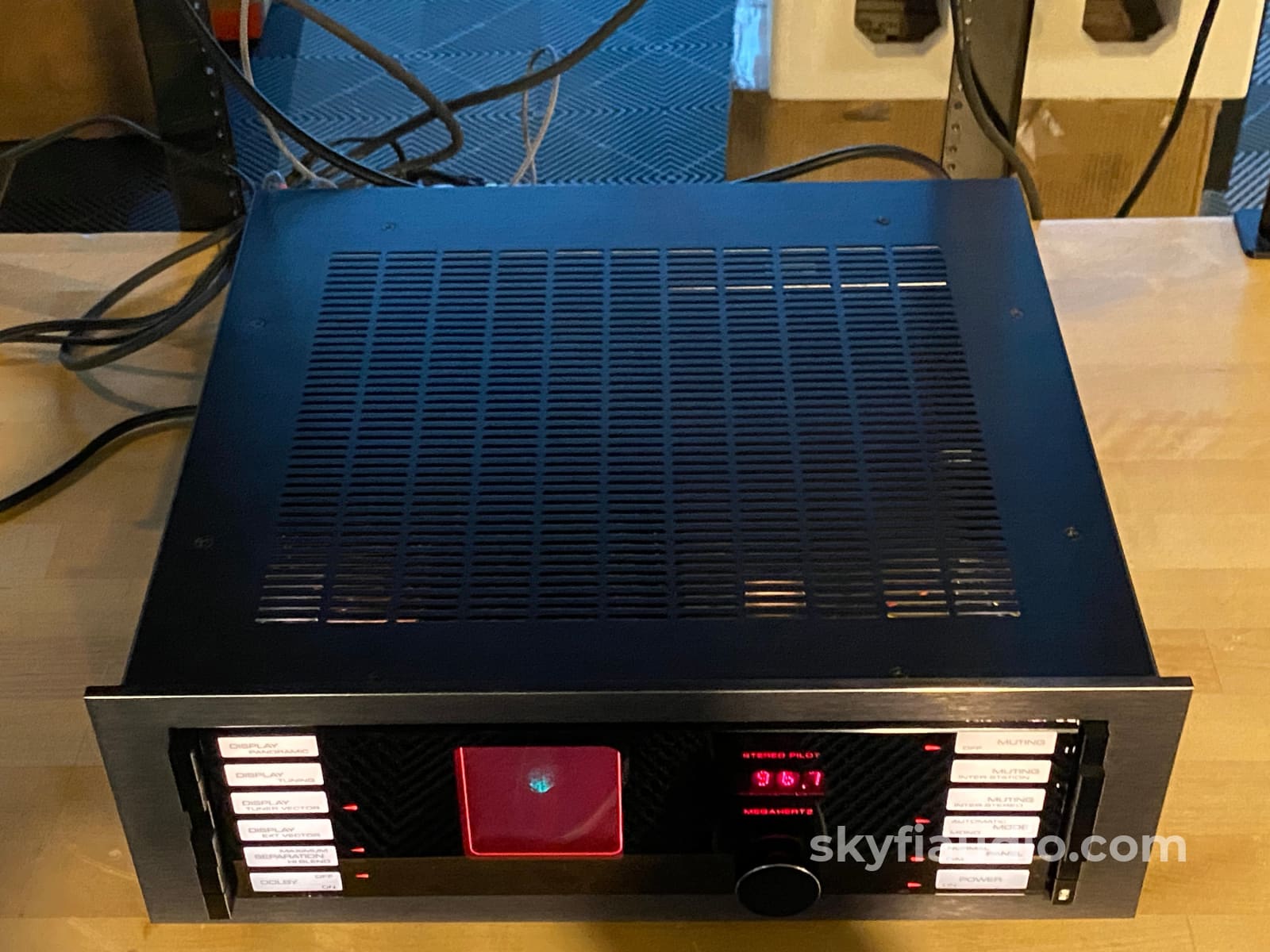
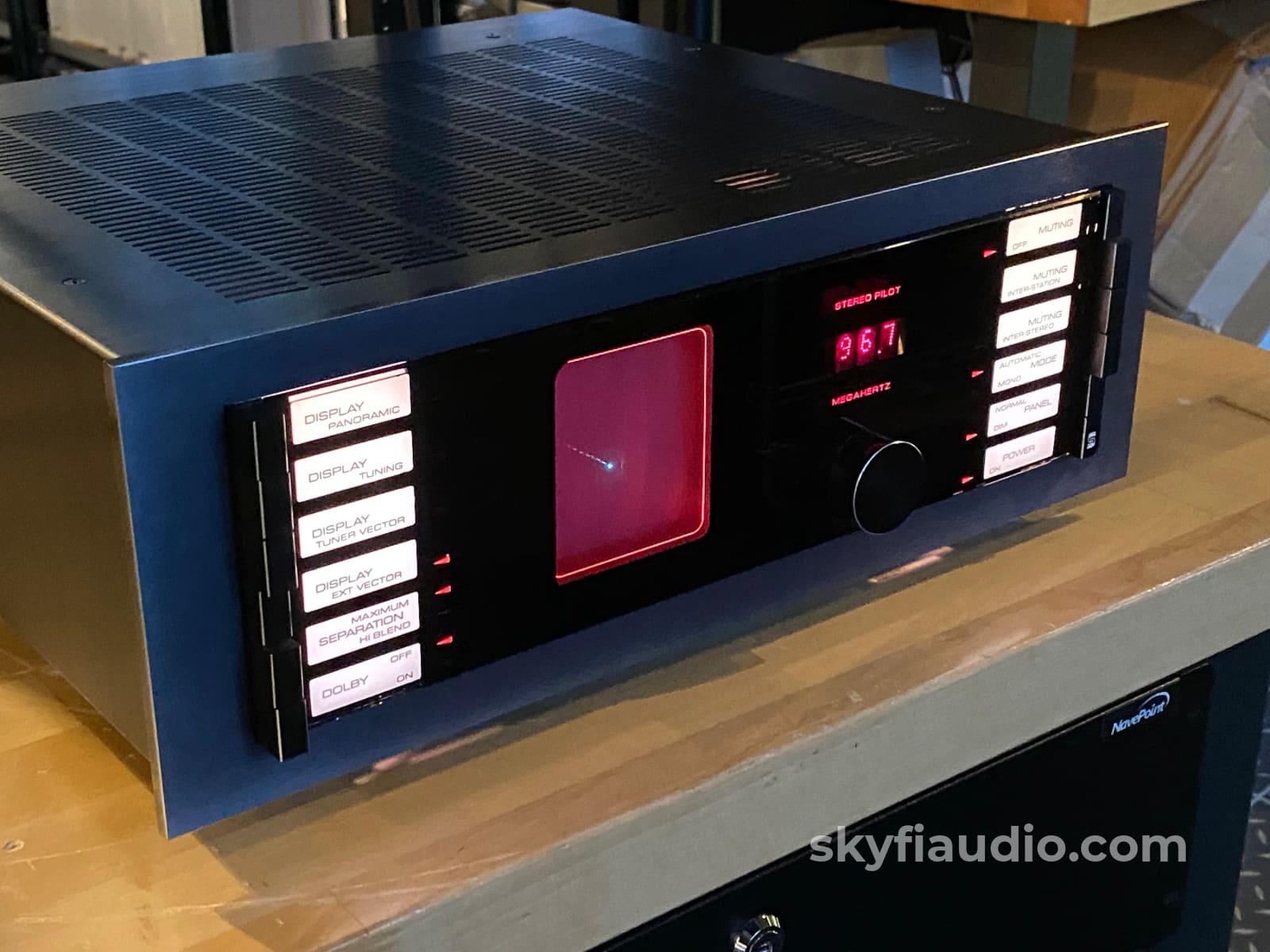
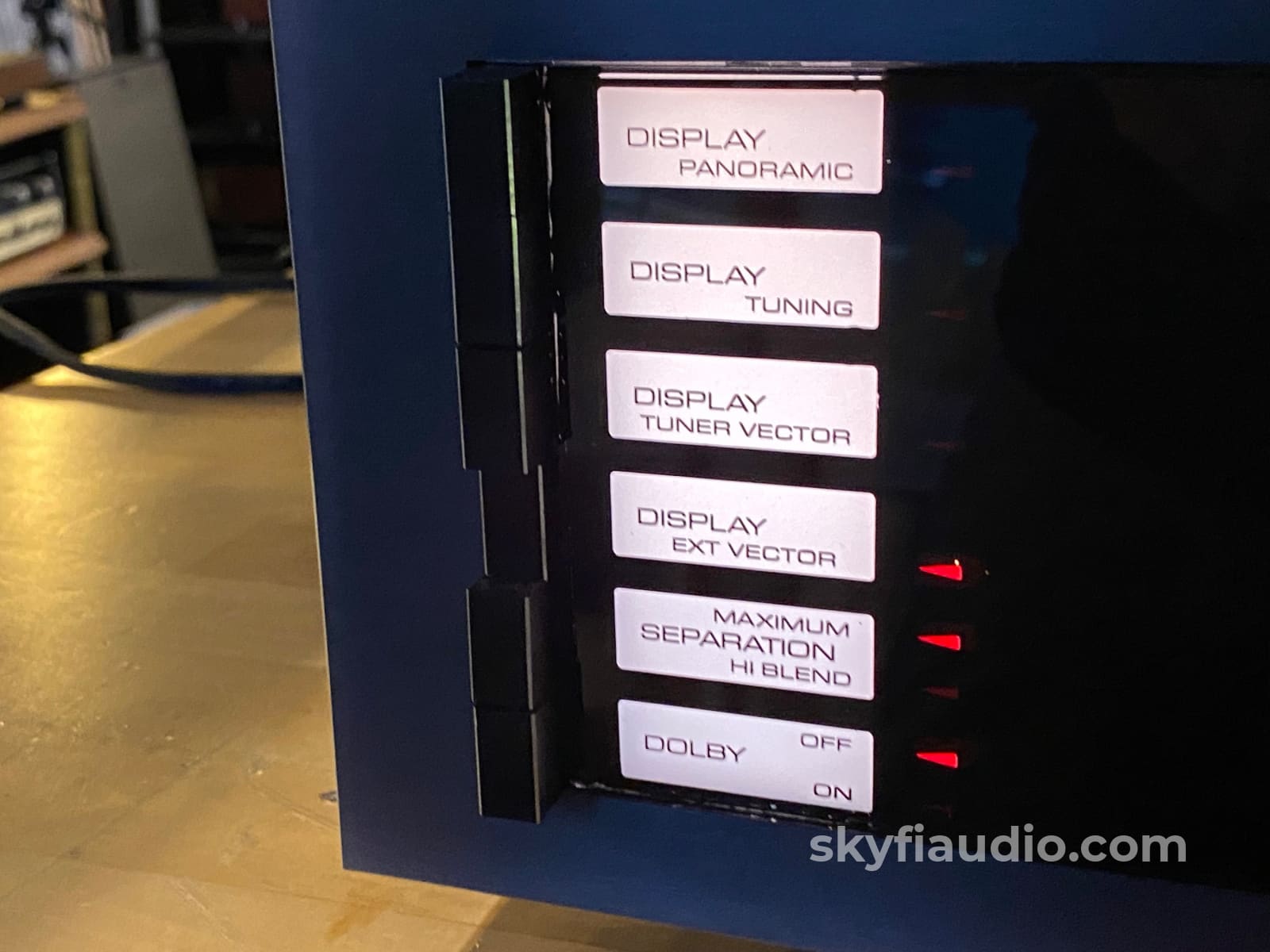
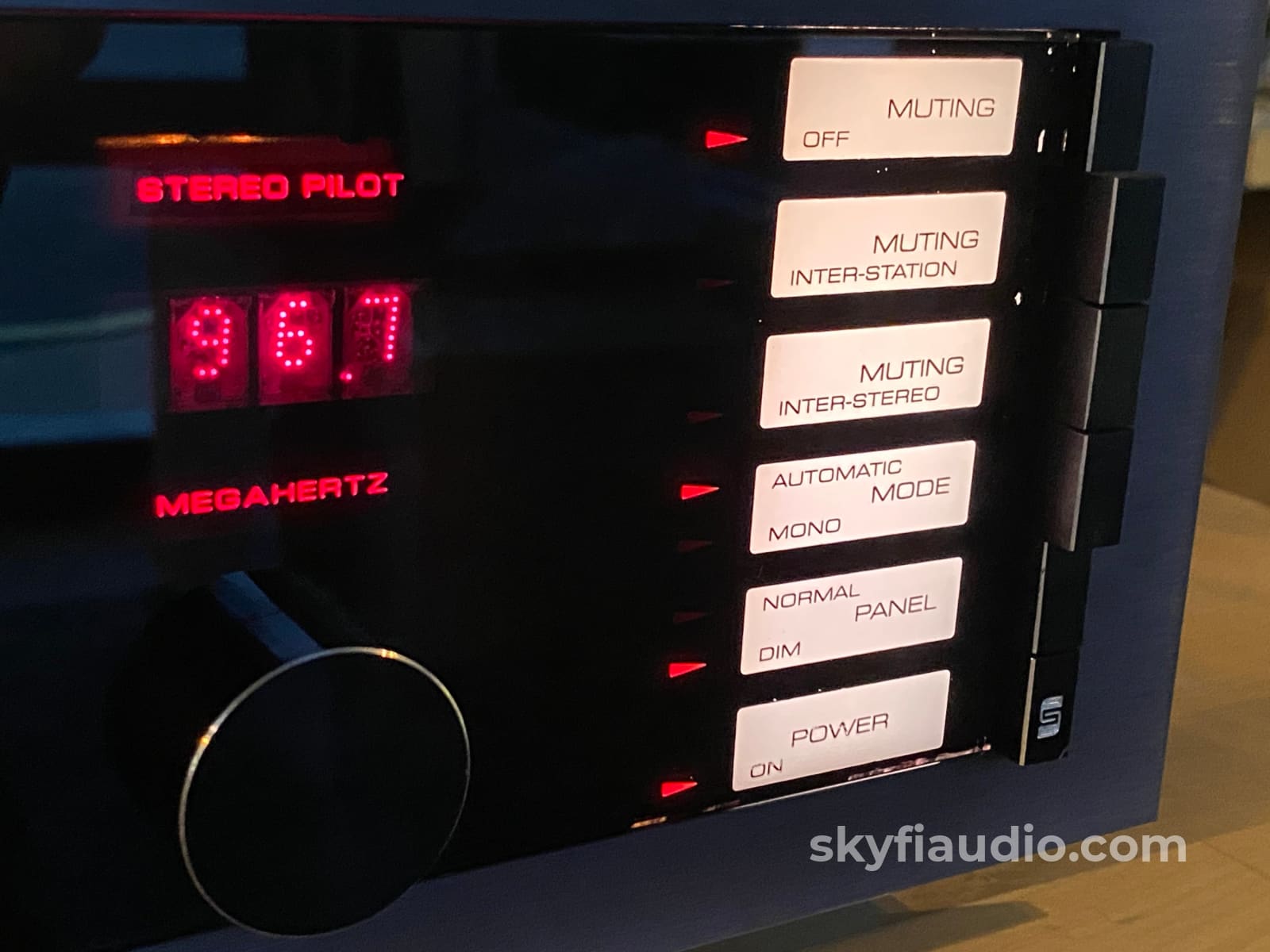
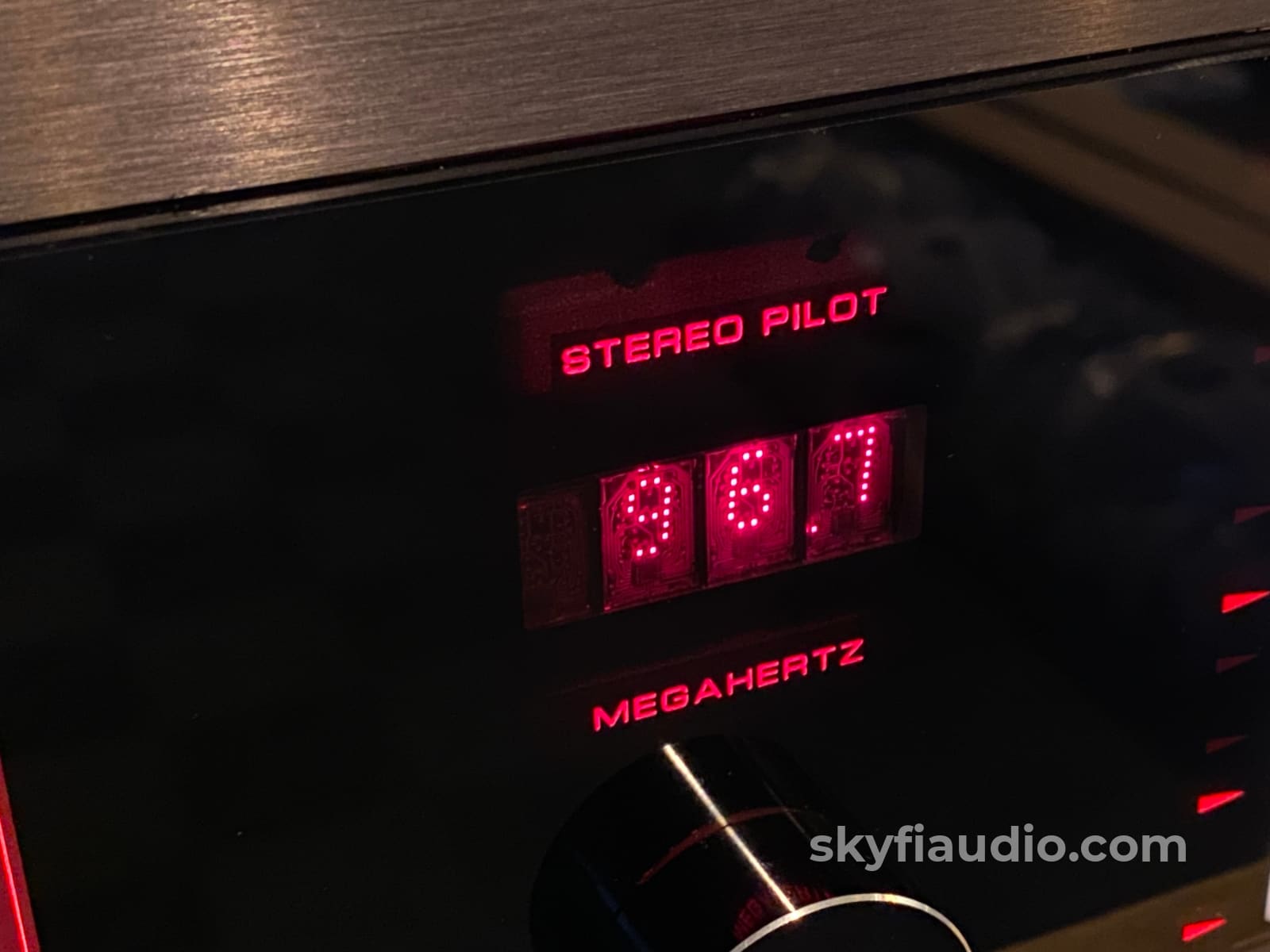
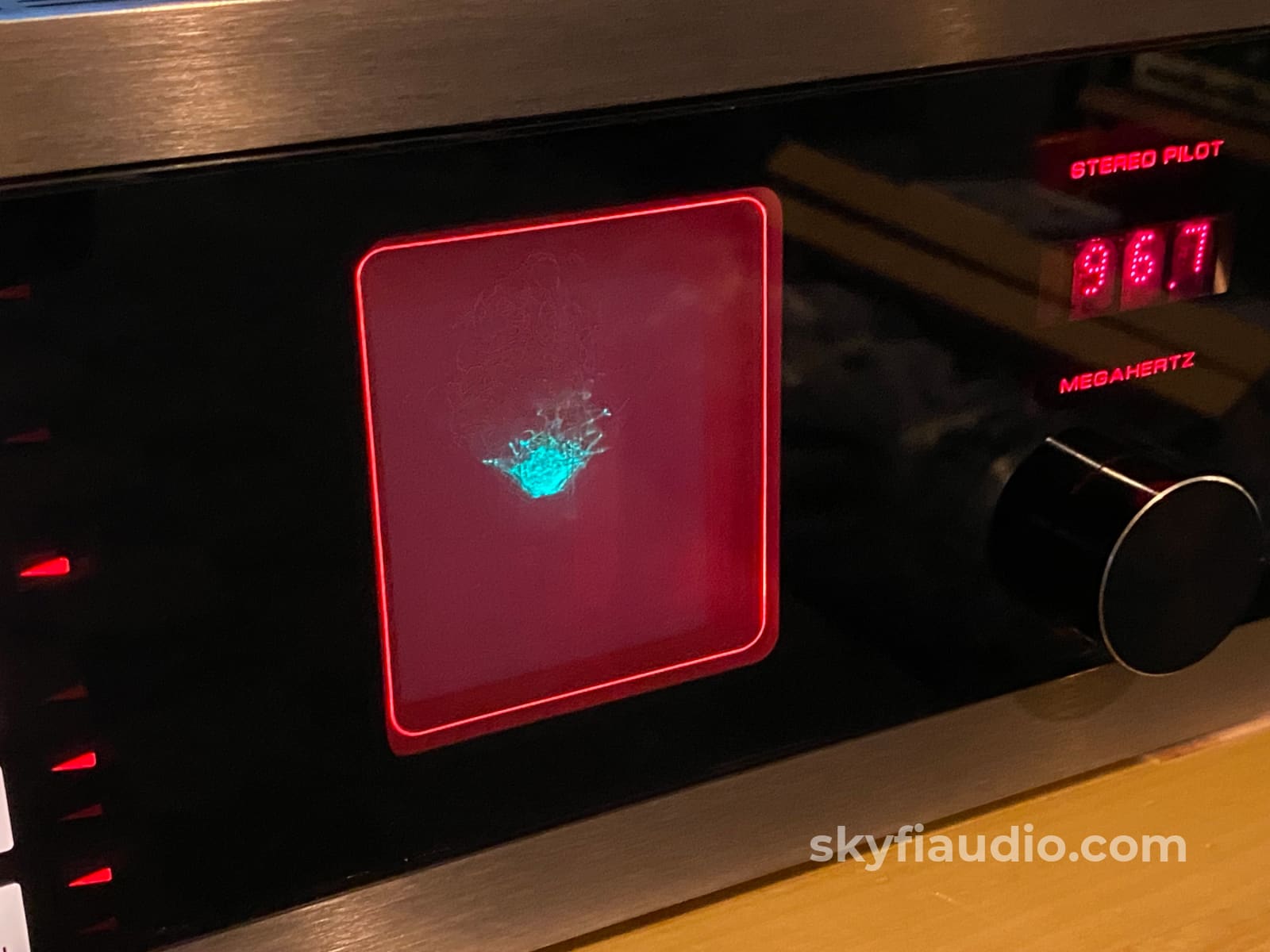
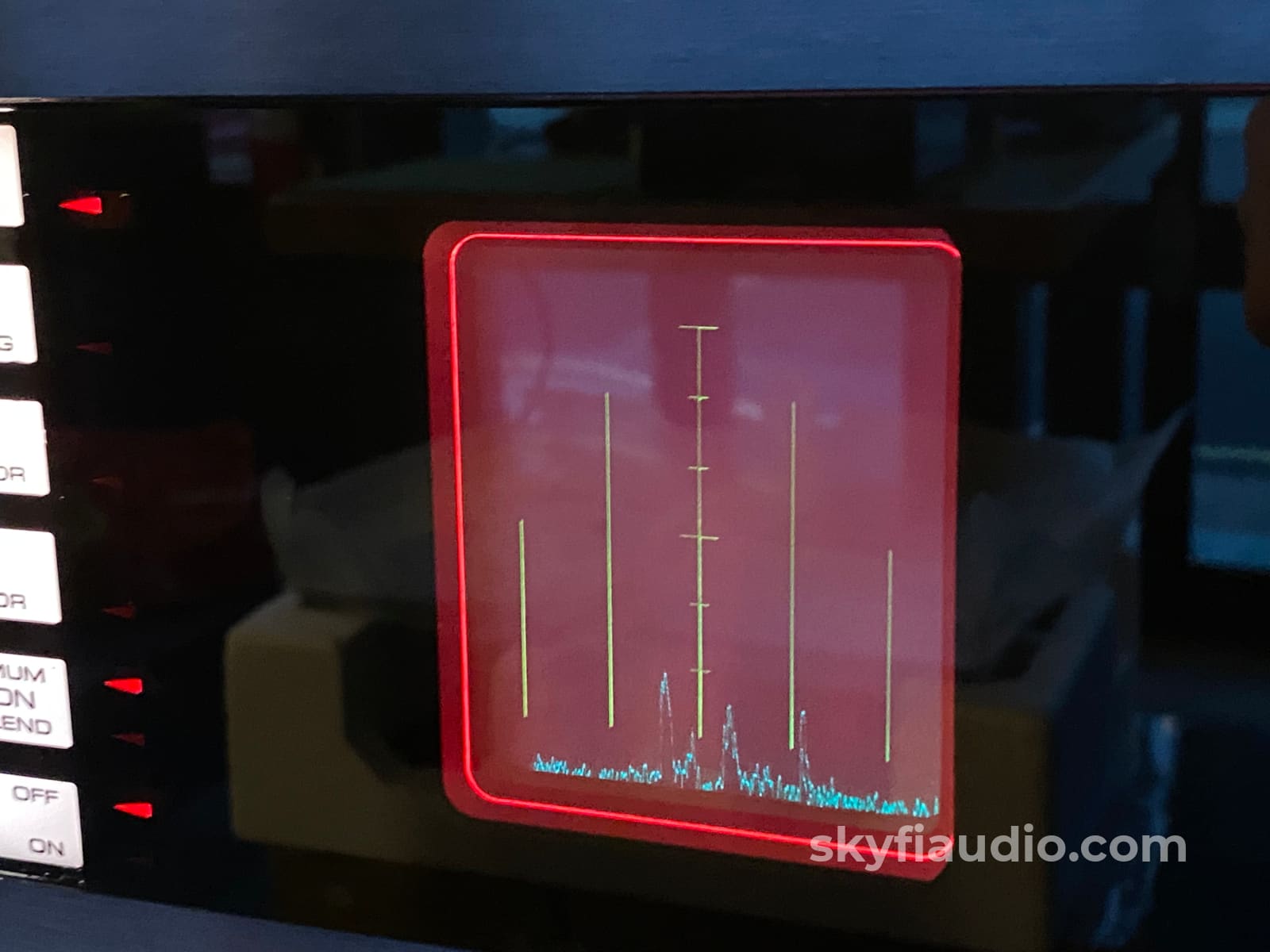
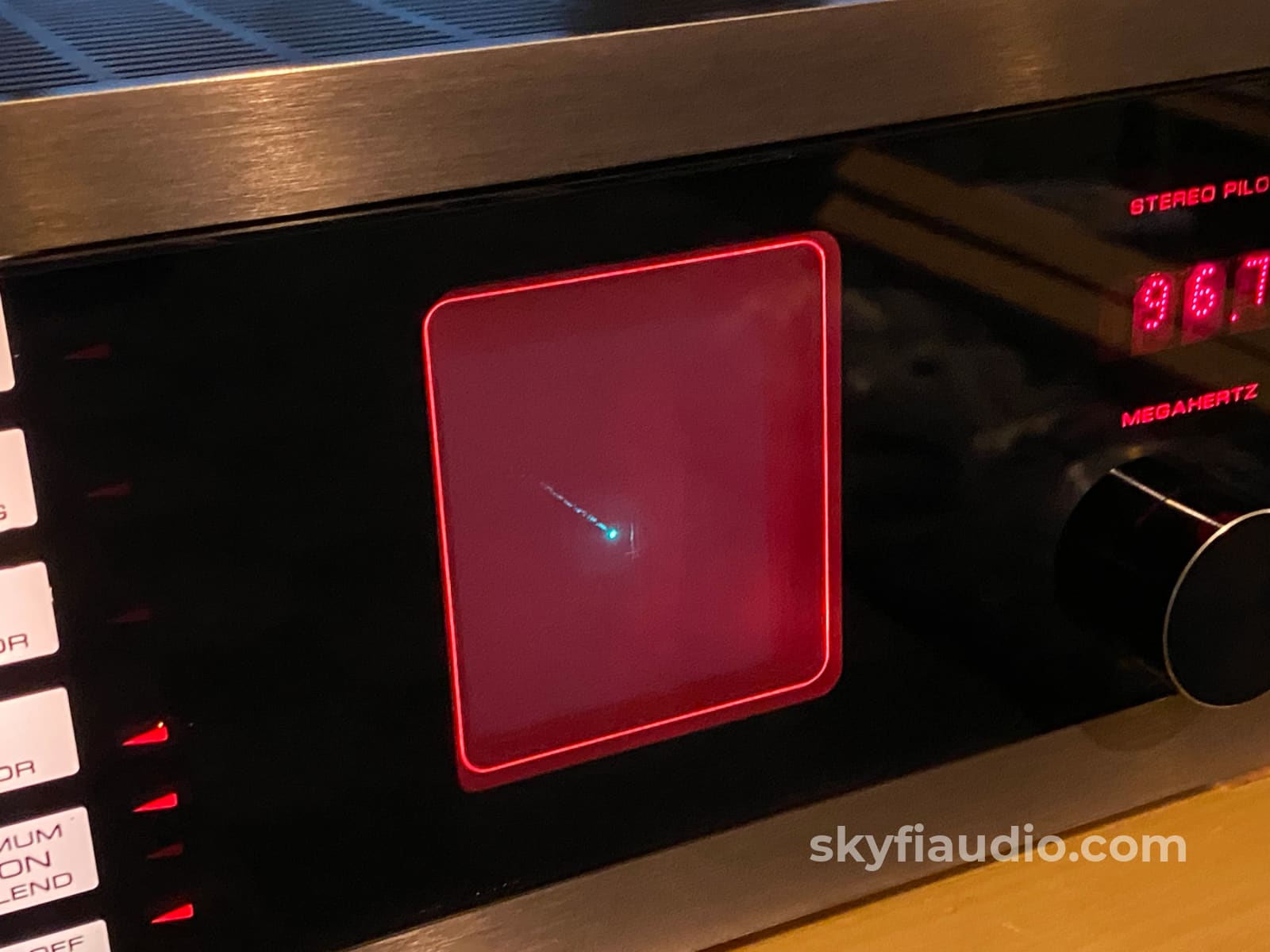

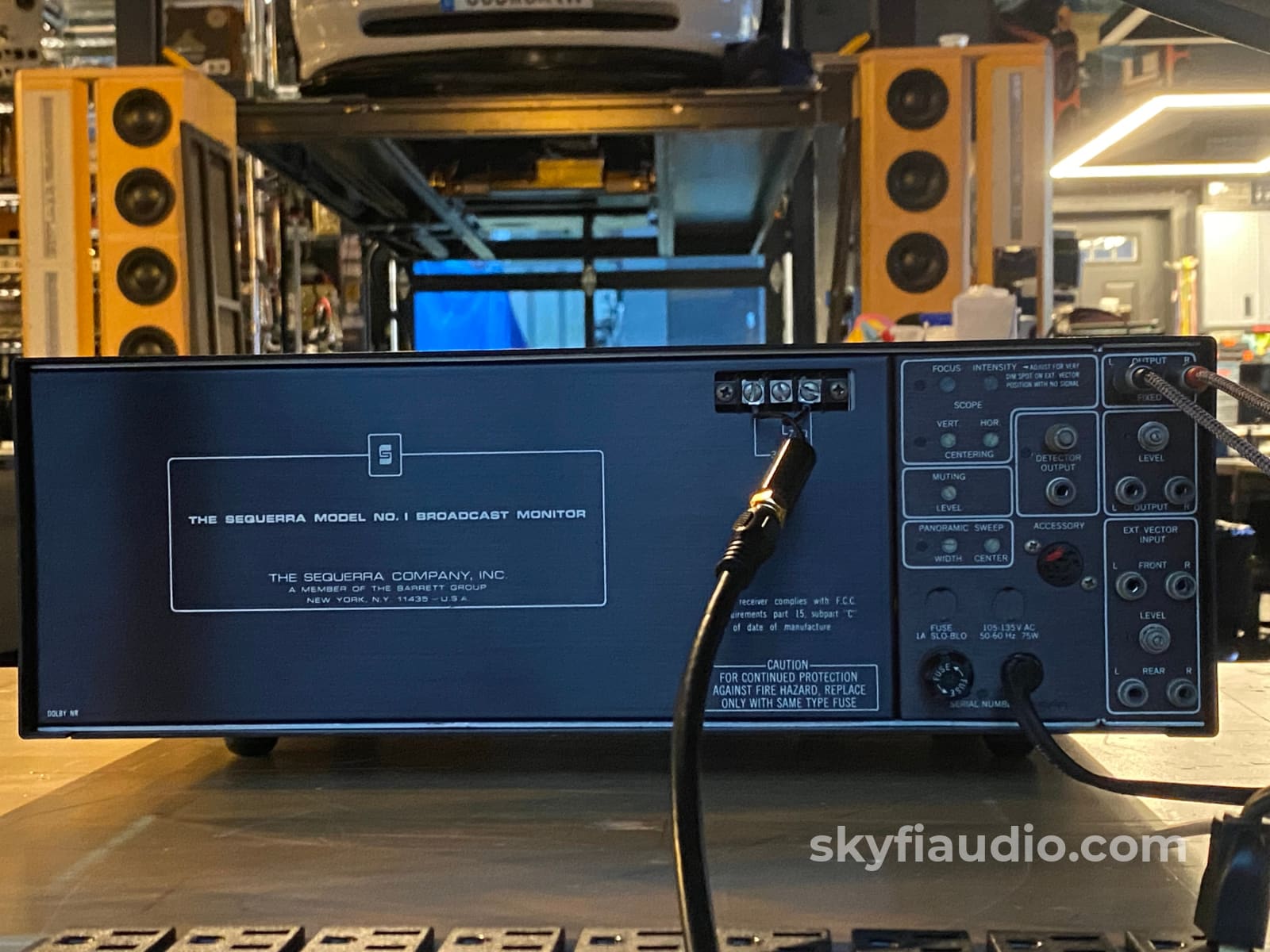
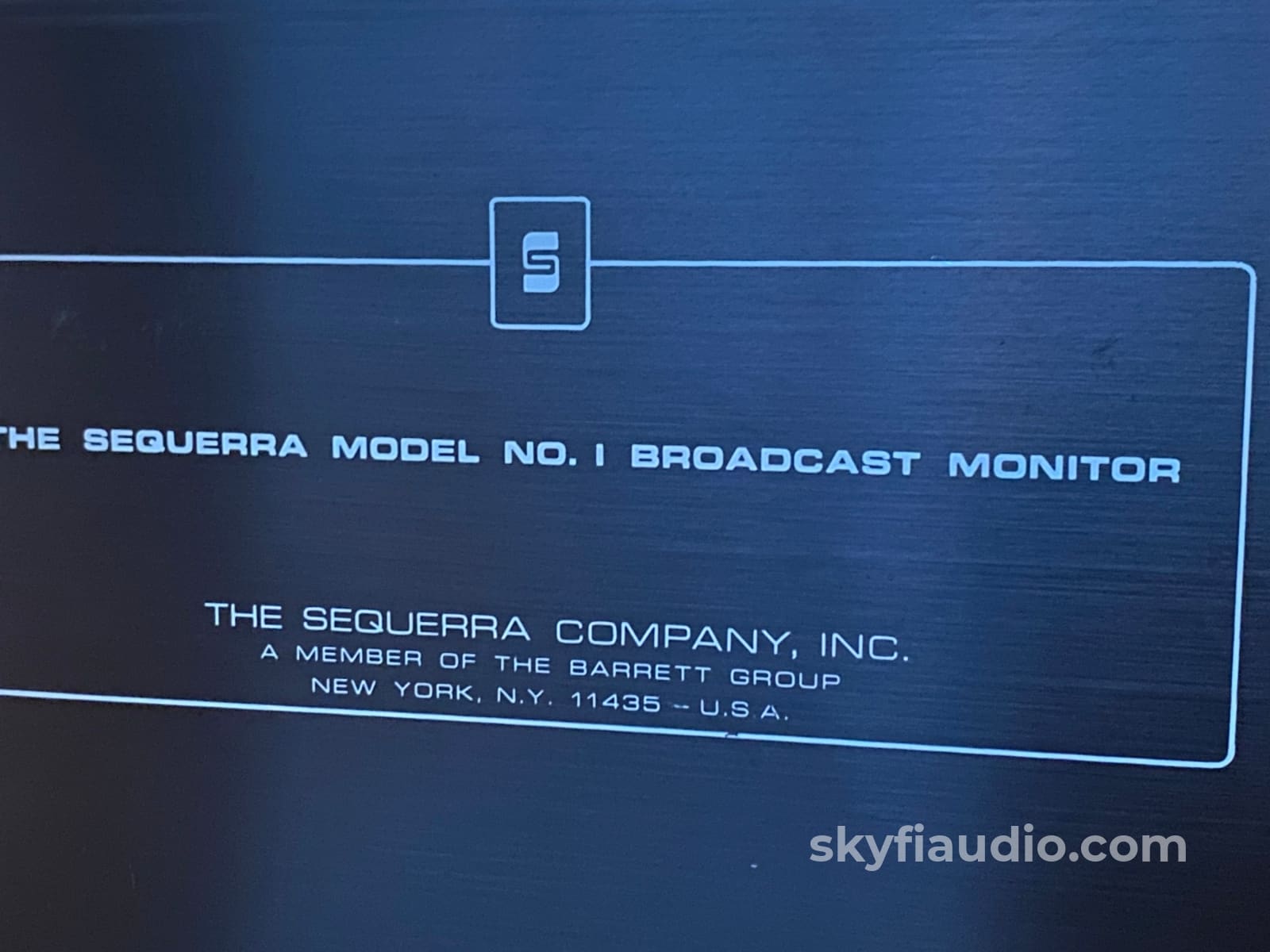
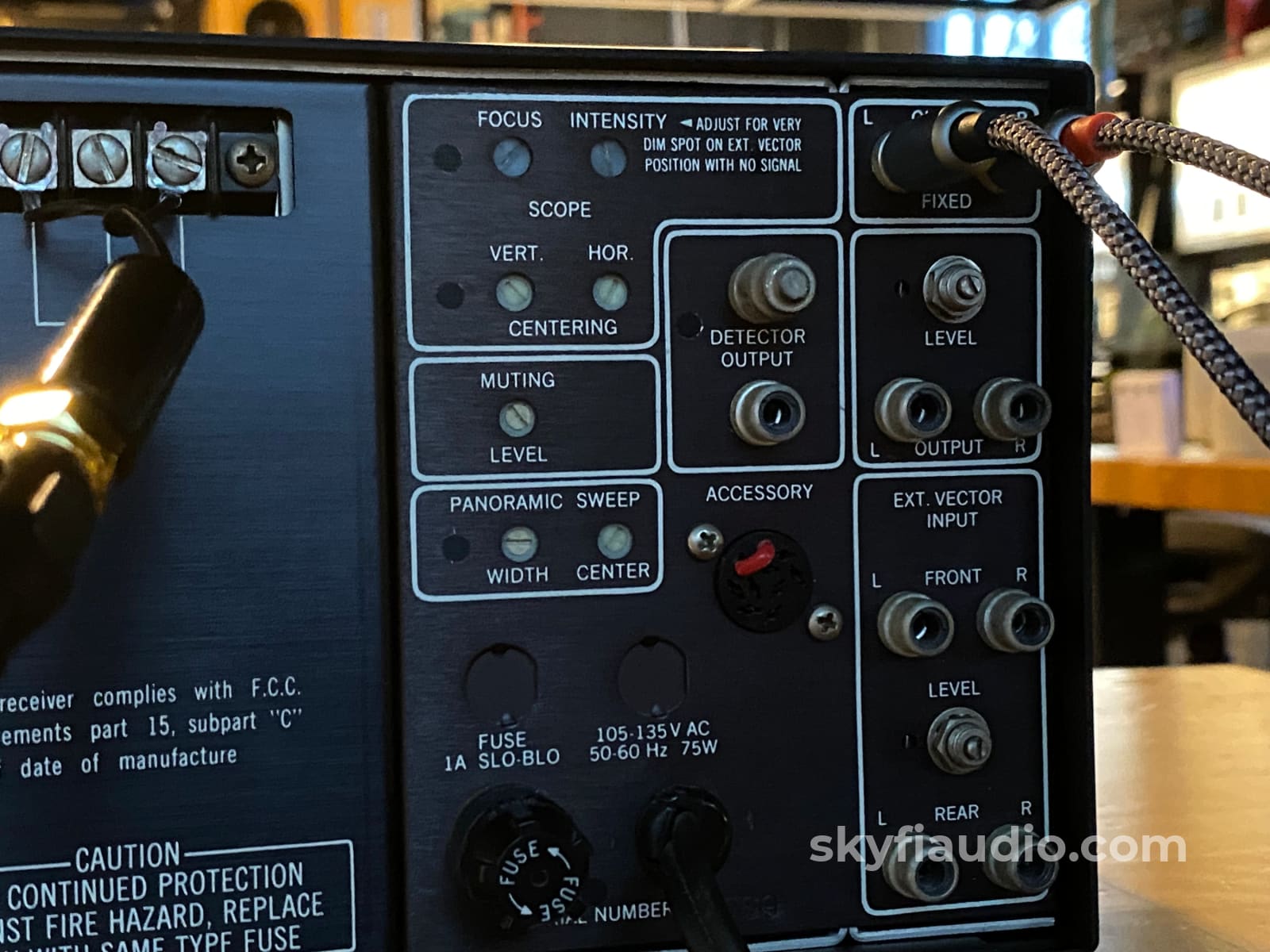
The Sequerra Model No.1 Broadcast Monitor - Best Tuner Ever!
Free Shipping on *ALL* Electronics (Excluding Speakers, Contiguous 48 US States Only)
Pickup currently unavailable at SkyFi 479

The Sequerra Model No.1 Broadcast Monitor - Best Tuner Ever!
SkyFi 479
479 South Broad Street
Glen Rock NJ 07452
United States
General:
Writing about this special tuner just doesn't cut it - from our YouTube:
This particular tuner series came out in 1974 at a time where there was some pretty fierce competition. The Marantz Model 10B had been around for a little bit, and the McIntosh MR78 had just come out a year before, so there were three all-American made tuners that are now considered the best tuners ever made. Much better than their British counterparts.
A lot had to do with the fact that in the US designers had the additional challenge of designing tuners to work over significant distances to reach stations - unlike the UK which is a more compact area. These 3 tuners were the absolute best of the best, and this Sequerra was the most sophisticated and most expensive by a large margin.
When this tuner came out in 1974 it was almost $2000, which is almost the price of a car in today's money! During its run which ended in the late 90's, it went all the way up to $4,000 in this variation. There were other variations like the reference models that easily exceeded $10,000, but this was considered reasonable/within reason, as this is more of an actual lab instrument than a piece of home audio equipment. And you can tell by its construction, design, parts quality, and presentation. It was really designed for radio stations to analyze their signals and understand their performance limitations, and was quickly adopted by home owners that wanted the absolute best of the best.
Probably the neatest feature is the built in oscilloscope that is hard to miss. It has several different modes - Panoramic, Display Tuning, and Tuner Vector. And there's also a 4th mode titled External Vector which allows you to input external signal.
The CRT Scope is super bright and very responsive. All controls work as they should. It is able to reproduce a strong stable signal as you would expect and is sounding fabulous. Any imperfection you see in the display are cause by the refresh rate of the camera, not visible in real life.
We cleaned and retested the controls and aligned the display. Nothing else was needed which is a testament to the build quality and thoughtful engineering.
Internally it's quickly obvious that this is more of a lab piece of equipment than a home component.
The display is a cool gunmetal color that's not quite black, not quite gray. The pictures show it darker than it looks in person.
Recommended Cables:
Kimber Kable - RCA Interconnects - Better
Kimber Kable - RCA Interconnects - Best
More from Sequerra:
*These PDF links may not match up to this exact model, but are close enough for historical purposes.
The SkyFi Testing Process for Tuners:
We start with a visual inspection of all internal components to make sure that there are no signs of heat stress or damage. Capacitors are checked for telltale signs of predictive failure including bulging, shrunken wrappers, or physical leakage. We also inspect the PCBs for discoloration from resistors or transistors that may have been running hot. On vintage units we often spot check select capacitors for value and ESR. Vintage analog tuners also have moving parts related to the tuning gang and dial string. These parts are inspected for smooth operation.
If the unit passes visual inspection it is bench tested for a handful of key performance parameters using a Sencore SG80 AM/FM Stereo Analyzer. The SG80 allows us to “simulate” an ideal radio station using precision test signals instead of music. This device, in conjunction with an oscilloscope allows us to properly evaluate the following parameters:
1. AM Reception (Where Applicable)
2. FM Mono Reception & Tuning Meter Function
3. FM MPX Reception (Stereo)
4. Dial Tracking - How accurately the tuner dial or display indicates the actual frequency of the broadcast being received.
5. Stereo Separation - A properly working stereo tuner will have minimal crosstalk between the left and right channel.
6. Sensitivity & Signal Strength Meter Function - By lowering the output of the SG80 we can simulate weak stations and determine how well the tuner will be able to pull in weak distant stations. This adjustment also helps us verify signal strength meter function.
If the tuner has acceptable performance related to the parameters above we connect the unit for listening tests with a simple dipole antenna. We listen for audio reproduction quality of local stations and evaluate how many stations the tuner can receive while we sweep through the dial. We are looking to verify that the tuner can decode stereo on strong local broadcasts and pick up a wide variety of local stations at the bottom, middle, and top of the frequency band. At this point we also test convenience features such as muting, filters, built in oscilloscope function, etc.
We finish up with an extended listening test on our long term test rig. We tune in a strong local station and monitor for drift over a 2-3 hour period.
|
Item |
Included |
|
Original Box |
Not Included |
|
Manual |
Not Included |
|
Remote |
Not Applicable |
|
Cables |
Yes - Captive Power Only |
|
Physical Condition (Info Here) |
7 / 10 |
|
Working Condition |
10 / 10 |
Choose options














